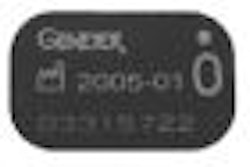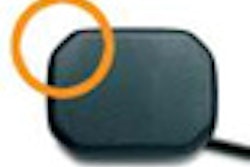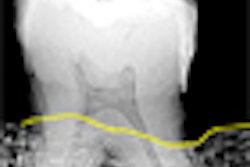If a picture is worth a thousand words, a good radiographic image is worth at least a hundred gutta percha points to endodontists who want to perform successful root canal therapy. Digital radiography is the technique of choice for many professionals because of its speed and accuracy. But which kind of digital image receptor gives you the best bang for your gutta percha "buck"?
Wireless. That's according to group of researchers at the University of Missouri at Kansas City (UMKC) who recently hit upon an innovative way to evaluate sensors. They located 14 cadavers with intact third molars and tried to locate file tips inside the molars using different sensors. The results, published in the April Oral Surgery, Oral Medicine, Oral Pathology, Oral Radiology, and Endodontology (Vol. 105:4, p. e48), pointed to a "significantly lower" measurement error with a wireless sensor compared to wired and storage phosphor plate (SPP) sensors.
Despite its small sample size, the study offers useful information for dentists, commented Gail F. Williamson, R.D.H., M.S., professor of dental diagnostic sciences at Indiana University. "The ability to evaluate fine files to determine working length has been a common topic reported in the radiographic and endodontic literature. What I take away from this study is that of the three digital receptors tested, the CDR sensor had the best resolution, which allowed better visualization of the file."
The UMKC researchers introduced a fine endodontic file (#10) into the canals of the molars at random distances from the apex of the tooth. Three #2 image receptors were used to take images of the file: DenOptix SPP, Gendex charged-coupled device (CCD) sensor (wired), and Schick computed dental radiography (CDR) Sensor (wireless). Six raters viewed the images to identify the radiographic apex of the tooth and the tip of the endodontic file. After the observations, teeth were extracted and the length of the canals measured to obtain a gold standard.
The study found that errors were significantly higher for the DenOptix SPP sensor and that the Schick CDR had the fewest errors. Although wireless sensors are new to the market and more highly priced than wired devices, they may be a good option, said lead author, Anas Athar, D.D.S., M.S., an assistant professor of oral pathology, medicine, and radiology at UMKC.
"At the last American Academy of Oral and Maxillofacial Radiology meeting in Charleston, S.C., we presented a study, in which I took part, indicating how convenient both operators and patients are with wireless sensors," Dr. Athar said. "Positioning the sensor in the mouth is difficult and inconvenient for the patient because the wires coming out of the mouth don't look good. If the prices for wireless sensors will go down, as it always happens with new technology, and if you have a choice, you should consider wireless."
Dr. Athar reported no conflicts of interest.



















